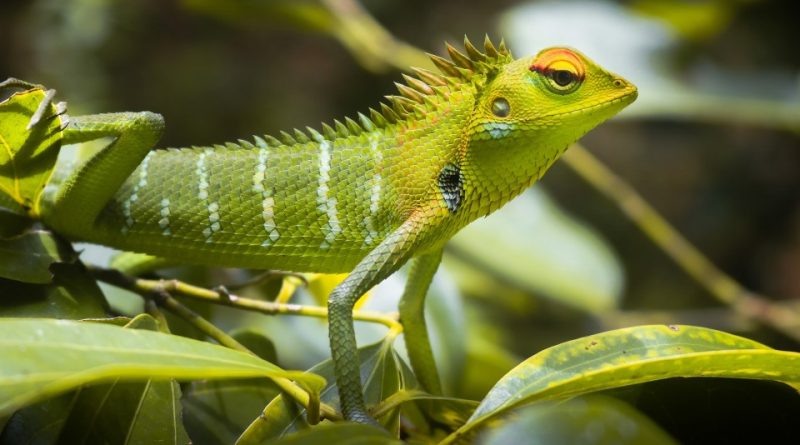Ecological role of reptiles
Ecological role of reptiles
Reptiles (Reptilia Laurenti, 1768) are the first class of vertebrates to free themselves from the aquatic environment and therefore adapt, due to their fundamental biological functions, to life in a strictly terrestrial environment. The number of reptile species currently living is approximately 11,341.
This is primarily due to basic adaptations aimed at avoiding dehydration of eggs and animals: the highly keratinized and generally scaly skin, the characteristics of the egg equipped with a shell are able to allow hatching at advanced development of the organism, and the lungs more concamerate than those of amphibians, to compensate for the absence of transcutaneous respiration.
The circulation is double and incomplete, even if in crocodiles the heart has the two ventricles completely divided internally, but reunited externally by the foramen of Panizza.
Currently, among the living orders of reptiles we remember:
– chelonians or testudinates, or turtles and tortoises;
– loricates, including crocodiles, alligators, caimans and gharials;
– the rhynchocephalians, represented by a single species: the tuatara;
– the squamates, including the lizards (lizards and similar: monitor lizards, geckos, chameleons, iguanas, etc.) and the ophidians (snakes).
Ecology –
Reptiles play a fundamental ecological role in many ecosystems around the world. In fact, they are formidable controllers of rodent and insect populations, and in some cases they are the most important predators of entire ecosystems (just think of crocodiles).
For this reason they play a significant role in the ecosystems in which they live, contributing in various ways to maintaining ecological balance.
Below are some of the main ecological roles of reptiles:
– Regulation of prey populations: Many reptiles are predators of insects, small mammals, amphibians and other invertebrates. This helps control the populations of these species, indirectly influencing the structure of the entire ecosystem.
– Food chain: Reptiles are often placed in different positions in food chains. They can be prey for birds of prey, mammals, and other predators, while at the same time they can hunt small animals or invertebrates. This balance in the food chain is essential for ecosystem stability.
– Impact on vegetation: Some reptiles, such as turtles, can influence the distribution of plants in an area through their feeding behavior and seed dispersal. They can contribute to the creation of diversified habitats and promote biodiversity.
– Disease control: Some reptiles, such as snakes, can control rodent populations that could spread diseases. This helps maintain ecological balance and reduce the risk of diseases transmitted to humans.
– Nutrient recycling: Some reptiles play an important role in the decomposition process, contributing to the recycling of nutrients in the ecosystem. For example, tubivores such as lizards can consume carcasses or decaying organic material, helping to convert organic waste into nutrients that can be reabsorbed by the ecosystem.
– Environmental signals: Reptile populations can be rapidly affected by environmental changes. Therefore, their presence or absence can serve as an indicator for the overall health of the ecosystem. Studying reptile populations can provide valuable information on the quality of the environment and the changes that may be taking place.
In summary, reptiles play key roles in numerous ecosystems, influencing the structure and dynamics of biological communities and contributing to the overall ecological balance.
Unfortunately, especially due to habitat loss and human activities, reptiles are among the animals most at risk of extinction.
The extinction of these living beings could cause a domino effect of incalculable consequences.
The researchers used statistical models to simulate the extinctions of these animals, linked to pollution and human expansion, and to evaluate what their impacts on ecosystems would be. Using the same technique, they also observed which anthropogenic phenomena – such as overbuilding, pollution and construction of dams in river beds – which put freshwater species at greater risk and which are their most hidden effects, i.e. difficult to observe in nature.
Above all, these findings indicated that if all species of turtles, tortoises and crocodiles currently assessed as critically endangered by the IUCN were to become extinct, 13% of the life forms that coexist with these creatures would be lost. Compared to any other threatened species examined, the disappearance of crocodiles and turtles has the potential to cause double the loss of species, which have high “functional diversity” within ecosystems. With this term, scientists define the range of species that carry out a relevant ecological task within the different habitats and therefore observing a loss of double the functional diversity, if crocodiles and turtles were to become extinct, indicates the importance of these reptiles, which assume throughout the world the role of builders of ecological niches.

